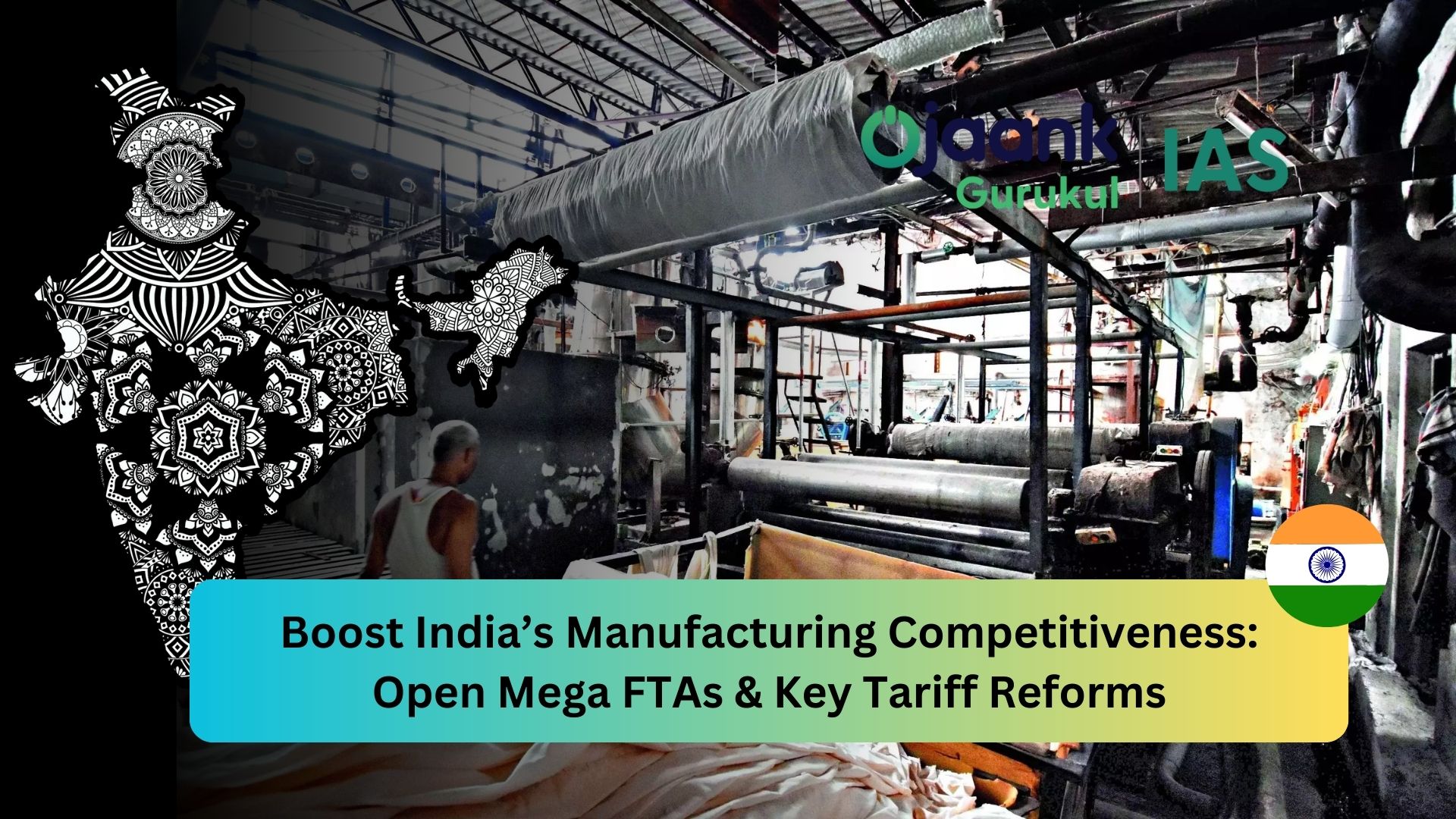Boost India’s Manufacturing Competitiveness: Open Mega FTAs & Key Tariff Reforms

India is at a pivotal moment in its growth and development trajectory. With the global geopolitical landscape shifting and multinational corporations (MNCs) relocating operations away from China, India has a golden opportunity to position itself as a leading hub for manufacturing and exports.
Budget 2025 must focus on reducing import tariffs, integrating into mega free trade agreements (FTAs), and creating a predictable trade environment to capitalize on these trends.
Why Mega FTAs Matter for India
Mega FTAs like the Comprehensive and Progressive Trans-Pacific Partnership (CPTPP) provide a framework for stable and rules-based trade. Countries integrated into such agreements often witness more resilient trade flows during periods of global uncertainty.
For India, joining the CPTPP or concluding a comprehensive review of the ASEAN FTA could yield multiple benefits:
- Enhanced Market Access: Participation in mega FTAs expands export markets, especially for labor-intensive sectors like textiles, apparel, and green energy products.
- Stable Trade Environment: Mega FTAs foster trade stability, even during global crises, giving businesses confidence in long-term planning.
- Boost to GVC Integration: Higher involvement in global value chains (GVCs) increases competitiveness and attracts export-oriented FDI.
The Case for Import Tariff Reduction
India’s import tariff policy plays a crucial role in manufacturing competitiveness. While steps were taken in the last Budget to reduce tariffs on key inputs, these efforts need to be expanded and sustained:
- Labor-Intensive Sectors: Reduced tariffs in textiles, apparel, and green energy products leverage India’s demographic advantage.
- New-Age Industries: Cutting tariffs on AI-related goods and solar panels positions India as a leader in emerging sectors.
- Alignment with Competitors: India’s average applied tariffs must align with emerging market economies (EMEs) in Asia, the world’s most economically dynamic region.
Integration with Global Value Chains
GVCs are essential for enhancing manufacturing and export competitiveness. India has lagged behind its ASEAN counterparts, Mexico, and Central and Eastern European economies in GVC participation. Here’s how Budget 2025 can change that:
- China+1 Strategy: By reducing tariffs and ensuring predictable policies, India can attract MNCs looking to diversify from China.
- Productive Employment: GVC integration creates skilled jobs, benefiting India’s workforce.
- Enhanced Export Competitiveness: Increased GVC participation translates to higher export volumes and global market share.
Key Policy Recommendations
To achieve manufacturing and export excellence, Budget 2025 should prioritize:
-
Tariff Reforms:
- Extend tariff reductions on manufacturing inputs.
- Align tariffs with Asian EMEs and announce a timeline for these reforms.
-
Mega FTA Participation:
- Conclude the ASEAN FTA review.
- Signal intent to join the CPTPP for broader market access.
-
Regulatory Upgrades:
- Modernize India’s regulatory framework to meet global standards.
- Revise the Model Bilateral Investment Treaty (BIT) for better investor protection.
-
FDI Attraction:
- Promote policies that encourage MNCs to relocate to India.
- Facilitate FDI in high-growth sectors like green energy and technology.
Conclusion
India’s small share of global trade—just 2%—indicates untapped potential. Budget 2025 offers a unique opportunity to implement reforms that enhance manufacturing competitiveness, integrate into GVCs, and attract export-oriented FDI.
By focusing on rules-based mega FTAs, reducing import tariffs, and upgrading regulatory frameworks, India can accelerate its economic growth and secure a significant share of the $33 trillion global trade market projected for 2024.
India must act swiftly to seize the opportunities presented by the shifting global trade landscape. Subscribe to our newsletter for insights on trade policy, FTAs, and strategies to boost India’s economic growth.